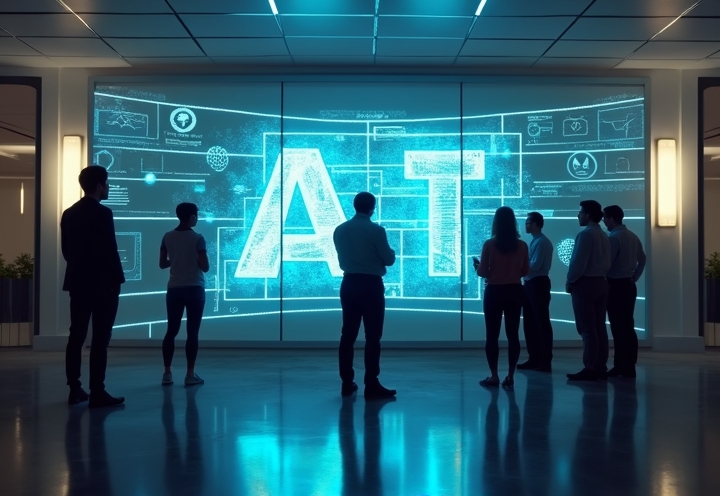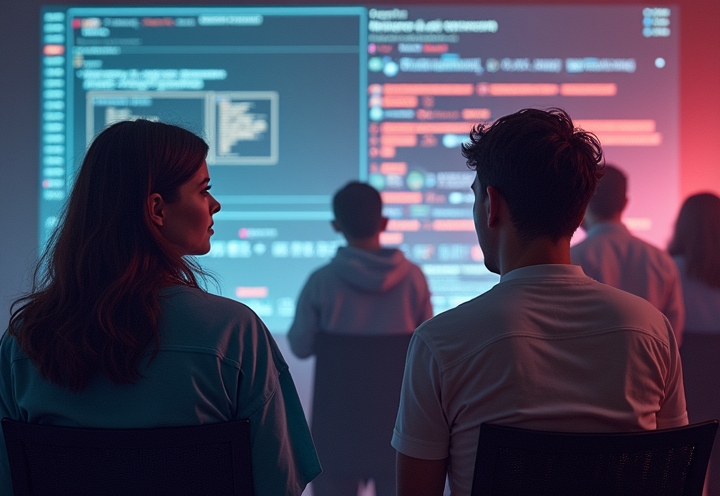
AI Codes Fast But Humans Must Verify Everything
AI now writes, tests, and debugs code while you focus on thinking and oversight—but speed demands verification as 37% still ships bugs and regulations tighten.

AI now writes, tests, and debugs code while you focus on thinking and oversight—but speed demands verification as 37% still ships bugs and regulations tighten.

You’re not lazy—you’re overloaded. Creative Robot uses AI to research, write, schedule, and post content in your voice across platforms while you focus on what matters.

When I split AI tasks across specialized agents instead of dumping everything on one model, latency drops and quality improves. It’s orchestration over conversation.

You’re writing captions at midnight, paralyzed by inconsistency. Creative Robot generates on-brand content, schedules posts, and handles SEO across 110+ languages while you reclaim your time.

AI agents now plan, code, and test at senior-dev levels. The new bottleneck isn’t typing speed—it’s your ability to clarify intent, structure work, and review output.

AI lets you design software through prompts instead of typing every line. The challenge moved from writing code to framing problems, reviewing outputs, and orchestrating agent workflows—experience still matters, just upstream.

AI makes producing software easier, but good software still requires human judgment to frame problems, set constraints, and review output. The shift is from writing code to thinking clearly about what to build.

AI now scores higher than humans on empathy tests through consistent, calm responses—but we still crave human connection. The gap? It mirrors feelings perfectly but can’t actually feel them.

The next wave isn’t bigger LLMs—it’s architectures that mimic brain-like networks. Pathway’s BDH replaces static attention with modular neurons that adapt through experience.

We bolted AI onto old workflows and called it progress. Real change means designing processes where multiple specialized AI agents own tasks, use tools, and actually run the show—not just autocomplete your anxiety.

Non-devs are shipping real software by thinking clearly and describing intent. The gatekeepers are syntax and debugging, AI handles those now.

I taught my AI agents to doubt themselves, read the room, and break problems into chunks—now they collaborate like a functional team instead of chaotic solo acts.

Treating AI like a 10x engineer gets you confident garbage. Treating it like a supervised junior gets you leverage. Here’s the protocol that’s working: tight specs, role separation, brutal feedback loops, and humans owning architecture while agents handle implementation.

Would you let AI agents deploy code at 3 a.m. without you? That question reveals where humans belong in the loop. Here’s my three-part system for deciding what to delegate.

LLMs autocomplete text. What if AI learned to simulate worlds, discover causes, and prove theorems instead? Three paradigm shifts worth watching.

AI didn’t break your processes—it exposed them. Most companies automate chaos instead of redesigning workflows. The fix: outcomes over tasks, streamline first, treat data as fuel.

You don’t need traditional dev skills if you master directing AI tools like a tech lead—not just prompting, but architecting, chunking problems, and verifying output at scale.

AI can predict how you feel better than most humans, but doesn’t actually feel anything. Studies show it outperforms crisis workers at validation—and you can tune it.

Multi-agent AI systems fail without emotional intelligence guiding them. Here’s how self-awareness, empathy, and social skills prevent chaos and turn your agents into a functional team.

Forget fuzzy “human in the loop” advice. Use three knobs—risk, ambiguity, visibility—to decide where you stay in control vs. let agents run free.

AI lies confidently—inventing citations, features, even violent phrases in calm audio. The future isn’t perfect models, it’s skilled users who cross-check, fact-verify, and keep humans in the loop.

You’re already debugging prompts without realizing it. Here’s when to iterate vs. nuke the chat—and the deeper skill underneath both moves.

Young professionals often wait for life to “start” after the next credential. Chapter 7 flips that: growth is self-directed, not assigned by institutions.

Stop throwing “do everything” prompts at AI. Break work into tiny, clear blocks with one role per task. Define context, constraints, and acceptance criteria first—AI executes, you architect.

Software that researches your audience, writes posts in your voice, and publishes on schedule—so you stop guilt-posting in bursts and vanishing for weeks.

Most businesses don’t lack content ideas—they lack time. Creative Robot researches, writes, optimizes, and schedules posts in your voice so you stay visible without the grind.

Business owners kept saying “I should post more” while drowning in work. So I built Creative Robot: AI that learns your voice, writes posts, and schedules them—while you actually run your business.

You’re not bad at marketing—you’re just human trying to outwork an algorithm. I built an AI system that drafts, schedules, and posts content so you stay visible without the burnout.

Business owners waste energy feeling guilty about posting. I built AI workflows that write in your voice, optimize for search, and autopost consistently—so the system runs while you focus on actual work.

Your AI confidently bullshits half the time. Here’s how to design questions and checks that separate “sounds smart” from “is actually right.”
Recent Comments